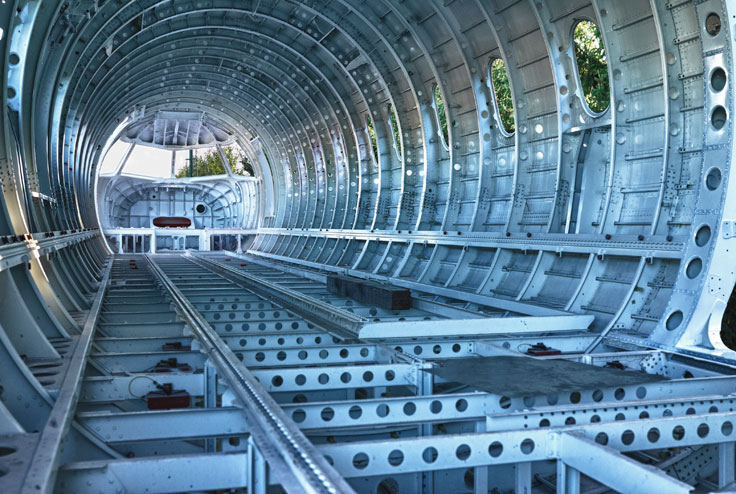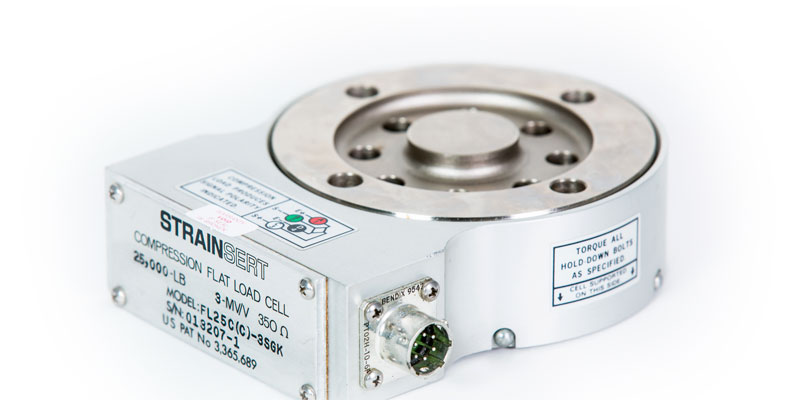Standard Load Cell Installation Instructions
The best performance of the Load Cell is achieved through adherence to the following provisions and instructions. (See specification drawing below)
A. Installation:
- The support for the load cell must be rigid (at least two or three times the rigidity of the cell) and have a flat and parallel surface to within 0.001 inches TIR, and a recommended surface finish of 63 micro-inches and minimum hardness of Rockwell B-100.
- The diaphragm side of the load cell must be against the supporting structure.
- The load to the Universal Load Cell is applied through the threaded hole at the center of the load cell. All the threads in the load cell must be engaged by the loading bolt. For a through hole installation the loading rod must be torqued to the required levels.
- The load to the Compression Load Cell is applied to the center raised loading boss. The entire surface of the boss must be engaged by the loading member.
B. Hold-Down Bolt Torque:
Preload torque values in the specification table below should be used as follows:
- Universal and Fatigue rated Load Cell Hold-Down Bolts must always be preloaded to specified torque values, regardless of magnitude or type of applied load, to repeat and maintain original calibration performance of the load cell. The hold-down bolt material must be a minimum of 150,000 psi UTS, and seating torque must be applied gradually and uniformly to all bolts, in increments of no more than 1/4 of the final torque value.
- Compression Load Cell Hold-Down Bolts are intended only for assembly location of the load cell, and have no effect on calibration. Recommended torque values are not mandatory. In some applications, such as checking the forces generated in hydraulic presses, hold-down bolts may be omitted.
- Spacers are recommended for use with hold-down bolts, see the below specification drawing for details. The purpose of the spacers is to prevent loosening of the hold-down bolts, by allowing use of a longer bolt, as well as to provide some additional deflection themselves.
Specifications
C. Loading Bolt Torque:
Loading Bolt preload requirements may be modified according to the following conditions:
- Uni-Directional, Low Cycle, Low Frequency*, or Static Loading Conditions do not require any preloading torque.
- In all modes of loading, other than (1.) above, loading bolt torque values apply. (See Torque Values table).
- For Load Cells with through loading holes (without threads), above detailed preloading conditions must be simulated.
*Approximately 1-Hz, depending on masses involved and magnitude of inertia forces generated.
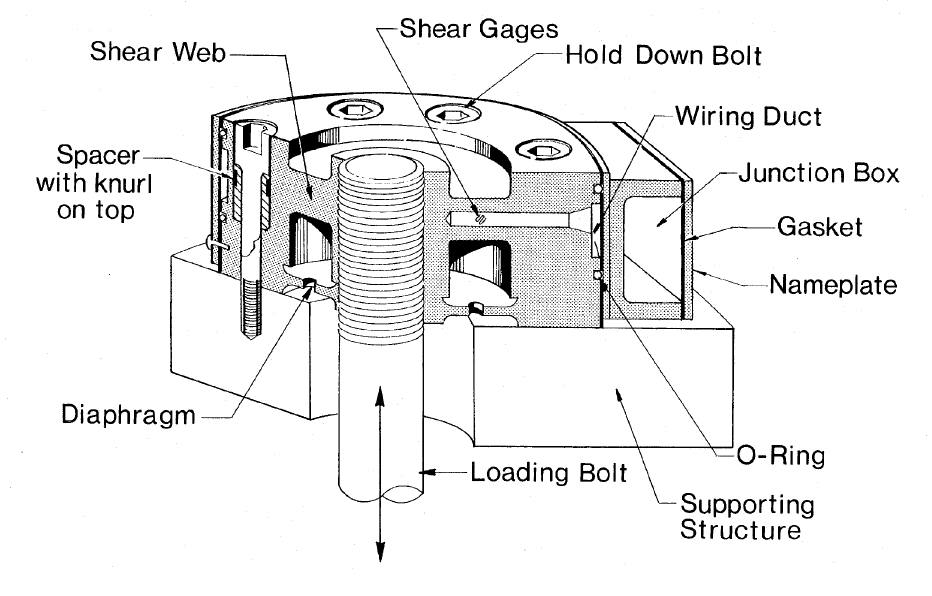
U.S. Patent No. 3,365,689
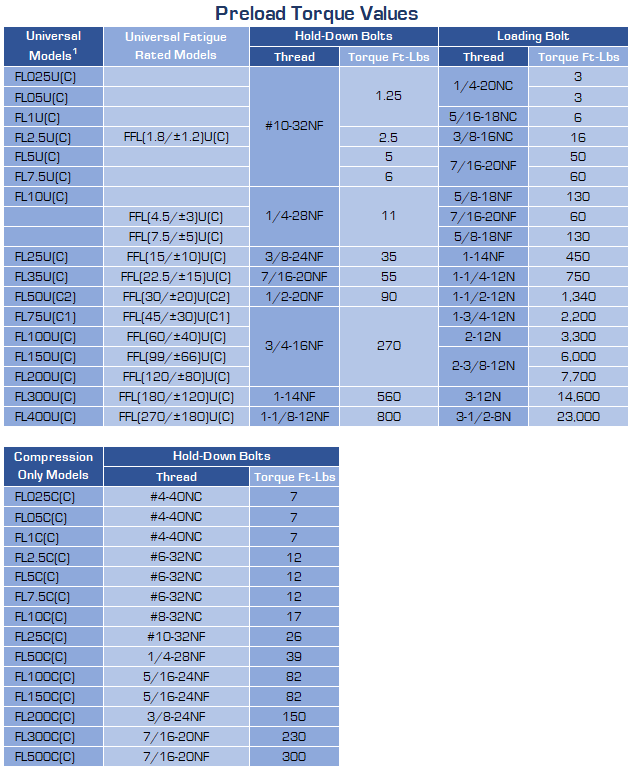
Notes:
- Universal & Fatigue Rated Flat Load Cells require high strength socket head cap screws, with corresponding torque valves, and spacers as illustrated.
- Torque values given are for lubricated threads.
- The Loading Bolt must engage all the threads in the Load Cell threaded hole.
- Spacers should be used with the knurl towards the bolt head.
Spacers for Flat Load Cells in conjunction with Hold-Down Bolts
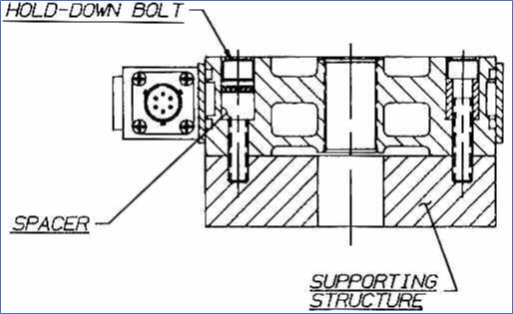
The purpose of spacers is to prevent loosening of Hold-Down Bolts.
Universal & Fatigue Rated Flat Load Cell Hold-Down Bolts must always be tightened to specified torque values, to maintain original calibration performance, regardless of the magnitude of the load.
One of the reasons for tension loss in tightened bolts is because microscopic thread surfaces in bolts and mating threads are not smooth, but consist of peaks and valleys, as illustrated. Thus, threads are engaged at correspondingly higher than average stress levels, causing continuous crumbling of such high spots. This reduces the elongation of the bolt imparted by tightening.
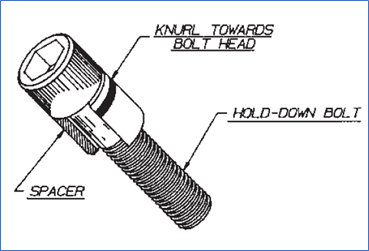
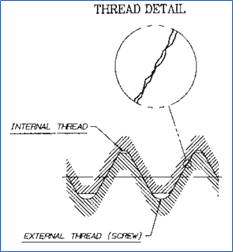
The longer the bolt, the larger the tightening elongation. In a short stubby bolt, loss of tightening elongation due to thread crumbling can be very serious. To reduce this effect to a manageable condition, spacers are used. Spacers add to the length of the bolt, as well as provide some additional deflection themselves, and help maintain the desired bolt preload.
Strainsert - for superior internally gaged force transducers.
Strainsert stands for:
- Product Quality
- Knowledgeable Technical Staff
- Standard and Custom Designs
- Customer Service
- Comprehensive Testing
Contact Strainsert
For information on load pins, force sensing bolts, load cells, tension links or our high quality custom products, Contact Us for further assistance.
